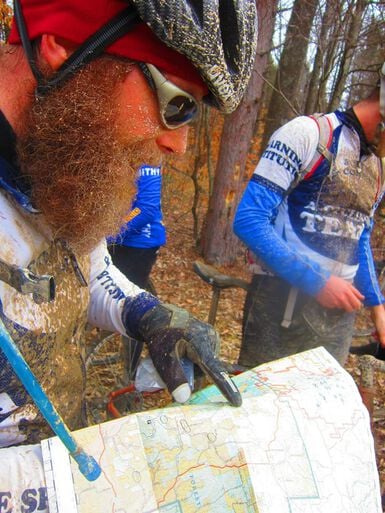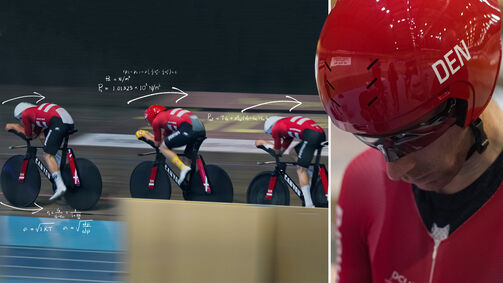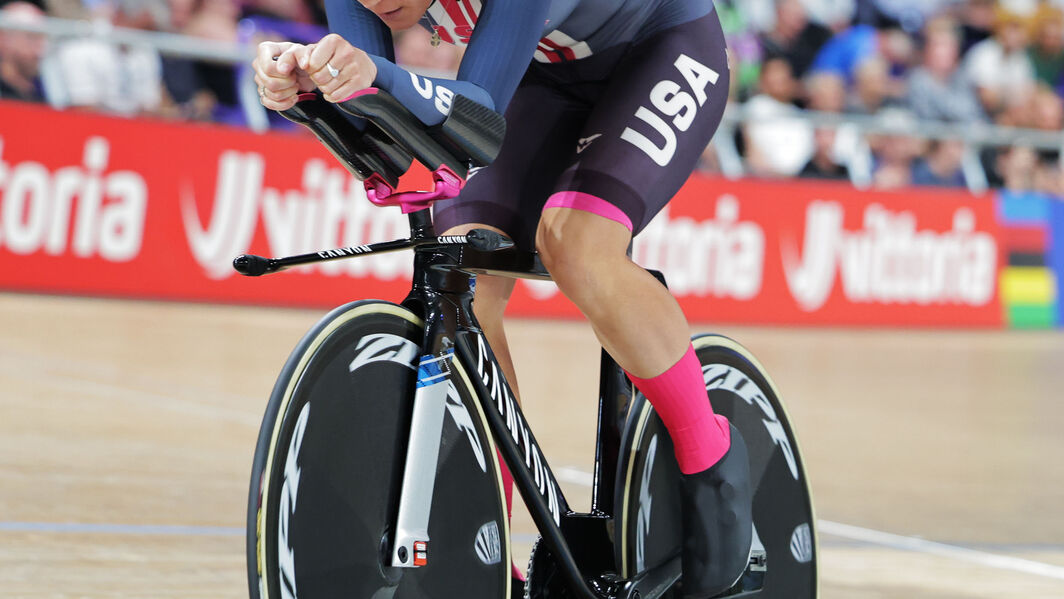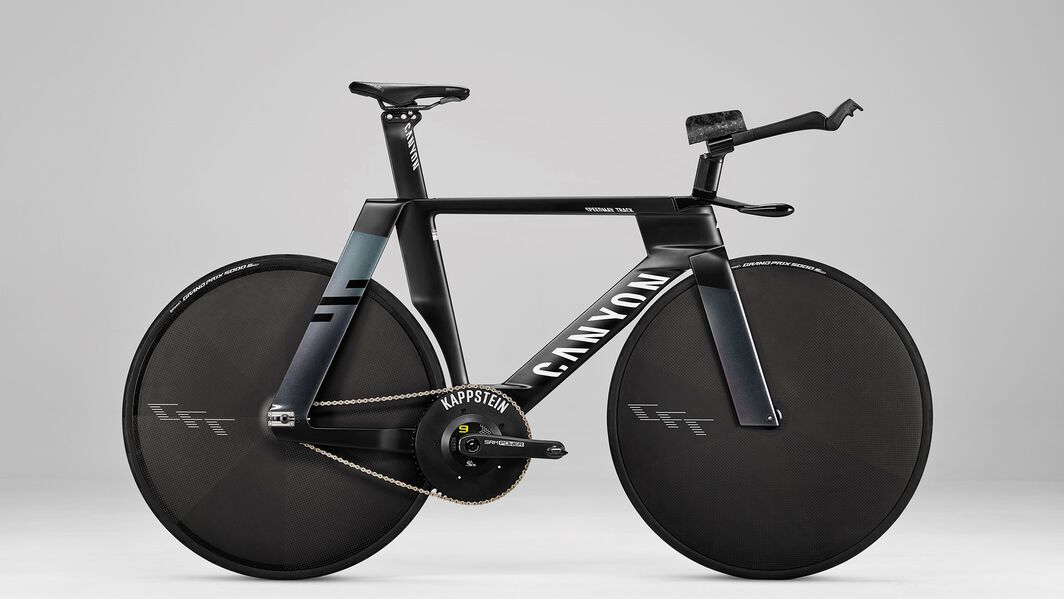Understanding track cycling events: an in-depth exploration
Intrigued about track cycling, but don’t understand the rules of any of the events? We have you covered.


With the summer Olympics right around the corner, millions of sports fans will discover track cycling for the first time. But unlike road racing, where the first rider to cross the finish line is the winner, many track events have specific rules that might not be immediately evident to the average person. For a cyclist, witnessing the two-person Madison teams hurl each other around a velodrome or a kilo competitor go all out for a 1,000m sprint might be the impetus to finally try out the track themselves.
Contents
Unleashing Speed: Sprint Events
You don’t want to take your eyes off a sprint event for even a second because anything can happen. Sprint events tend to be fairly short, with impressive displays of power and speed. Depending on the number of competitors, each event will have qualifying and multiple elimination rounds until a starting field for the finals is established.
In events where victory and defeat are often separated by mere milliseconds, an aero bike like Canyon’s Speedmax CFR Track – developed in collaboration with Chloé Dygert and her Team USA track squad, as well as the Danish national track-cycling team and aerodynamic experts Swiss Side – can make all the difference. The bike’s geometry and materials make it perhaps the most aerodynamic machine to ever rocket across a velodrome, while still able to withstand the punishing torque sprinters put on the frame.
The Art of Explosiveness: Sprint
Sometimes called a match sprint, this race between two riders is perhaps a match of nerve as much as speed; rarely do both riders go all out from the start. Instead, they both try to go as slow as possible, track standing on the pedals, making slow, incremental progress on the oval, while waiting for the other rider to make the first move. After the first rider makes the jump, the second rider typically has the upper hand. The second rider will pedal close behind the first, taking advantage of that rider’s aerodynamic slipstream until it’s time to overtake them before the finish. There’s much more strategy to this event, making it one of the most entertaining for spectators (and challenging for competitors).
Team Dynamics: Team Sprint
The team sprint race can best be described as a mix of a time trial and track and field’s relay event. Races last three laps for men and two for women. Teams – made up of three male competitors or two female racers – start at the opposite ends of the track. The racers form a paceline, with the lead rider peeling off after their lap, until the last rider is sprinting toward the finishing line.

Keirin: The Battle of Nerves and Speed
When it comes to all-out speed, there’s arguably no faster cycling race than the keirin. Originating in Japan – keirin means “racing wheels” in Japanese – the track cycling event was added to the Olympics in 2000 and quickly became a favorite of spectators and racers alike. A motorcycle or high-powered e-bike nicknamed the derny paces the field of riders, gradually increasing in speed from 25kmh (15mph) to 50kmh (31 mph) over multiple laps. The aerodynamic draft behind the pace rider allows the competitors to pedal at those same speeds. With 600m left in the 2km race, the pace rider pulls off, leaving the field to sprint for the finish line approaching speeds of 70kmh (43 mph).
Race Against Time: Kilometre Time Trial
Perhaps the most self-explanatory event, the rules to the event nicknamed the kilo are simple: Ride as fast as you can for 1,000 meters. The rider with the fastest time wins. Most velodromes are a 250m oval, so the race typically lasts four laps. At the 2023 World Championships in Glasgow, the podium winners were separated by a fraction of a second. You’ll find similarly small gaps at your local velodrome, meaning any small aerodynamic edge (like what you might gain with the Speedmax CFR Track) could be the difference between finishing with a medal or going home empty handed.
Endurance Epics: Conquering Longer Races
Experienced road bike riders who find themselves on the track seem to gravitate to the endurance events. The thousands of miles put on the road translates well to the fast, but steady, pace needed for endurance events like the omnium and elimination races.
In longer races, where fit and comfort are nearly as important as aerodynamics, the adjustability of the Speedmax CFR Track can’t be overstated. The cockpit can be adjusted for height and width, as well as tweaking the pad and extension positions. This not only helps dial in the comfort level, but also the best possible aerodynamics for a particular rider’s body type.
Although the stock Speedmax CFR Track is optimized for events like the kilo and team pursuit, the cockpit, front fork and wheel can be quickly and easily swapped out for mass-start events, like the elimination race.
.jpg?sw=1064&sh=599&sm=cut)
Team Pursuit: Coordinated Efforts for Victory
Two teams comprised of four riders apiece start on opposite sides of the track during the team pursuit. Forming a paceline, each rider takes a turn at the front, before peeling off and re-joining the group at the back of the line. The winner is decided by the third rider to cross the finish line after four laps or by one of the pursuit teams catching their opponents. (The men’s and women’s teams have the same number of competitors and must pedal the same number of laps.)
The individual pursuit has basically the same rules, but with individual competitors, not teams. Dygert has won world championships in both the individual and team pursuit multiple times in her career, including an individual gold medal last year in Glasgow. Not to be outdone, the Danish men’s team pursuit riders won the world championship on their Canyon Speedmax CF Track bikes, besting second-place Italy by more than two seconds.
Elimination Race: Surviving the Pack
Typically, elimination races feature two variations: the miss and out (the most popular version) and the win and out. The win and out is fairly simple. After a set number of laps – it could be one lap, every other lap, every fifth lap or so on – there’s a sprint to the finish. The winner of the sprint wins the race and exits, but the race continues. The winner of the next sprint is declared to be the second-place finisher, and so on. The race continues until the podium (either three or five competitors) is filled.
Riders racing the miss and out employ a bit more strategy; many inexperienced riders will pedal near the middle or rear of the pack, doing just enough to keep from getting eliminated each lap until it’s time to sprint for the victory. But moving up from your general pack position in the elimination race can be tricky. Very often, where you are in the pack during that first half lap will determine where you finish at the end of the race.
Madison: Team Tactics
The Madison epitomizes teamwork and strategy, as two-person teams try to score the most points over the greatest distance. Points are determined by intermediate sprints throughout the race. (In high-level competition, those sprints are contested every 20 laps, but at your local velodrome’s weekly race series, it could be every five or 10.) The winners of the sprint earn five points, second place three, third two, and fourth one.
But unlike the other team track events, only one rider participates in the race at a time; the other competitor rides at the top of the track until it’s their time to enter the race. (In most cases, the stronger endurance rider handles the bulk of the laps, while the more explosive rider spells them when needed and competes for sprint points.) When it’s time to switch riders, the competitor at the top descends downward, joining hands with their partner. The outgoing partner hurls their teammate forward in a sort of slingshot effect. The rest breaks allow the pace to remain high throughout he race. No matter how many points they have, only teams on the lead lap are eligible for victory.
Omnium: The Ultimate Endurance Challenge
Think of the omnium as the decathlon of track cycling; riders compete in a series of mass-start events – typically scratch, tempo, elimination, and points races – earning points based on where they place in each. Usually, a first place earns you one point, second two, and so on, with the rider with the lowest overall score winning the omnium. A rider doesn’t need to win even one of the events to capture the overall omnium crown; they just need to be the best placed in the aggregate.
Riders competing in the omnium must have incredible stamina, as they compete for high places in multiple events. The various events can be spread out over the course of a week, but often, especially during your local velodrome’s race series, they all take place on the same day. Any edge (like the aerodynamic benefits of the Speedmax CF Track) could pay huge dividends in the final standings.

A Guide to Track Cycling Lingo
If you’re new to track cycling, you might not understand some of the terms and slang being used right away. Here are some of the more common terms used.
- American race: Slang for the Madison, which was created in New York City’s Madison Square Garden at the turn of the 20th century
- Apron: The wide, flat section at the bottom of the track. You’ll see riders winding up or down from their races pedalling here.
- Bell lap: The last lap of the race, signalled by ringing a bell
- Devil take the hindmost: Slang term for the Miss and Out elimination race; the Devil refers to a competitor who rides in the back, trying to pip other competitors at the finish line to stave off elimination for themselves
- Infield: The center of the track where teams congregate and prepare for their events
- Points race: A mass-start event where riders sprint for points on set laps. The winner is the rider with the most points. One of the events making up the omnium.
- Rail: The railing at the top of the track separating the competitors from the spectators
- Scratch race: A mass-start event where the winner is the first rider across the finish line after a set number of laps; one of the events making up the omnium
- Snap-dragon: Slang for the elimination race, one of the events making up the omnium
- Straightaways: The two long sections of the oval track, connecting to the four turns
- Tempo: A mass-start event where riders begin sprinting for points each lap after the first four laps. (The race typically lasts 10km/40 laps for men and 7.5km/30 laps for women.) Riders lapping the field earn 20 points, while lapped riders lose 20 points. One of the events making up the omnium.
Did this article help?
Thank you for your feedback
-
 About the author
About the authorRobert Annis
Robert Annis is an award-winning outdoor-travel journalist. As an experienced writer and sport enthusiast he writes content that is inspiring with focus on road biking. You might have read Robert's articles in Bicycling, National Geographic, Outside, Travel + Leisure, Inside Hook, AARP, Midwest Living, Sierra, Hemispheres, Departures, Lonely Planet, Afar, Los Angeles Times, Chicago Tribune, RV Magazine, and Hidden Compass.




